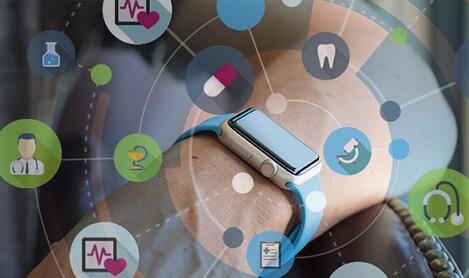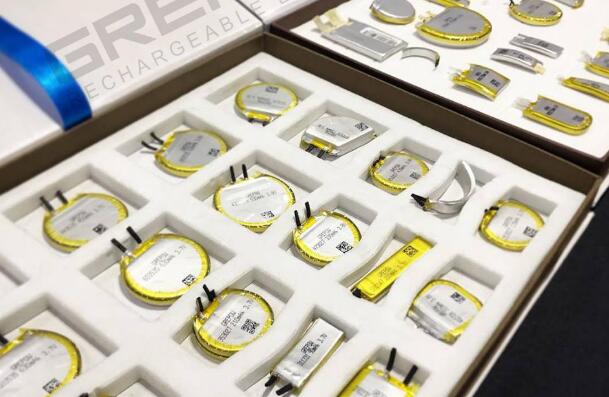How Smart Wearable Medical Devices Collect Energy?
The core architecture of a smart wearable device depends on the product type but consists essentially of a microcontroller, MEMS sensor, wireless connectivity circuitry, medical battery, and supporting electronic components. The overall medical electronics market is valued at approximately $3 billion in 2015 and is expected to continue to grow at a compound annual growth rate of 5.4%, reaching a market size of $4.41 billion by 2022. [Source: Marketsandmarkets.com].
Then, it is not surprising that the following factors are driving some of the main drivers of this development: rising population aging and increasing lifestyle diseases; increasing personalization, ease of use and advanced health care devices Demand; and the increasing use of wearable medical electronics.
At the same time, the cost of treating and recovering patients in hospital beds for a long time is becoming economically unsustainable, both for the medical institution itself and for patients. Therefore, the hospital is looking for ways to reduce these cost burdens, so that patients can get good and autonomy as soon as possible without affecting the patient's complete recovery. One way to achieve this is to liberate patients with remote monitoring and diagnostic equipment so they can return to their homes to recuperate.

These remote patient monitoring features typically include heart rate, blood pressure, respiration rate, sleep apnea, blood glucose levels, and body temperature. Therefore, this supports the hypothesis that “one of the real trends in stimulating the growth of portable and wireless medical instruments is the outpatient treatment”. As a result, many such portable electronic monitoring systems must have built-in RF transmitters so that any data collected from the patient monitoring system can be easily sent directly back to the hospital's monitoring system, where the attending physician can later check and analyze. Low-power precision components have contributed to the rapid growth of portable and wireless medical instruments.
However, unlike many other applications, such medical products typically have much higher standards of reliability, working time, and robustness. Much of this burden falls on the power system and its components. Medical products must work correctly and seamlessly switch between AC power outlets, backup batteries, and even a collection of ambient energy sources. In addition, every effort must be made to provide protection and withstand capability for a variety of different fault conditions, to maximize the working time when running on medical battery power, and to ensure that normal system operation is reliable whenever an effective power source is connected. In view of the above, it is reasonable to assume that “the cost of providing a suitable home medical instrument to a patient is far less than the cost of hospitalization for the same purpose.” However, it is vital that the equipment used by the patient must not only be reliable but also provide protection for the patient!
Therefore, manufacturers and designers of such products must ensure that they can operate seamlessly with multiple power sources, including backup energy, that data collected from patients is highly reliable and achieves 99.999% wireless data transmission integrity. This requires system designers to ensure that the power management architecture that will be adopted is not only rugged and flexible, but also compact and efficient. In this way, the needs of the hospital and the patient are mutually satisfied.

Fortunately, Grepow is committed to providing power solutions to these problems by introducing innovative products. Since there are many applications in medical electronic systems that require continuous power operation even in the event of an AC power interruption, a key requirement is to achieve low quiescent current to extend medical battery life. Accordingly, switching regulators with a standby quiescent are often required by the user.
In fact, some new systems that rely on a combination of medical battery and energy harvesting as their mains supply require a quiescent current of single-digit microamps, or in some cases even nanoamps. This is a prerequisite for adoption in the adoption of such "home-use" patient medical electronic systems. Although switching regulators generate more noise than linear regulators, their efficiency levels are much better than the latter. As long as the switching power supply operates in a predictable manner, noise and EMI levels have proven to be easily controlled in many sensitive applications. If the switching regulator performs switching at a constant frequency in normal mode and the switching edges are clean and predictable (no overshoot or high-frequency ringing), EMI is minimized. The small package size and high operating frequency provide a compact and compact layout that greatly reduces EMI emissions. In addition, if the regulator can use low ESR ceramic capacitors, the input and output voltage ripples are minimized, and these ripples are an additional source of noise in the system.

The number of power rails in today's multi-functional patient monitoring medical devices has increased while the operating voltage has continued to drop. Nonetheless, many of these systems still require 3V, 3.3V, or 3.6V rails to power low-power sensors, memory, micro controller cores, I/O, and logic. In addition, because their operation is sometimes life-and-death, many of them are equipped with a medical battery backup system to prevent the main power supply of the device from malfunctioning. Traditionally, their voltage rails have been supplied by buck switching regulators or low dropout regulators.
However, such ICs do not take advantage of the full operating range of the medical battery, thus reducing the potential medical battery runtime of the device. Thus, when a buck-boost converter (which boosts or lowers the voltage) is used, it will allow the full operating range of the medical battery to be utilized. This increases operating margin and extends medical battery run time as more medical battery life is available, especially as it approaches the low end of its discharge curve. If you are interested in our medical battery, please don't hesitate to contact us at any time! Email: info@grepow.com Grepow Website: https://www.grepow.com/
Related Articles
-

Powering the XR Revolution: Grepow’s Custom Battery Solutions at AWE USA 2025
2025-06-06 -

Grepow to Showcase Custom Medical Battery Innovations at Medical Taiwan 2025
2025-05-21 -

Drone Training Power Guide: LiPo Batteries & Chargers
2025-05-14
















































